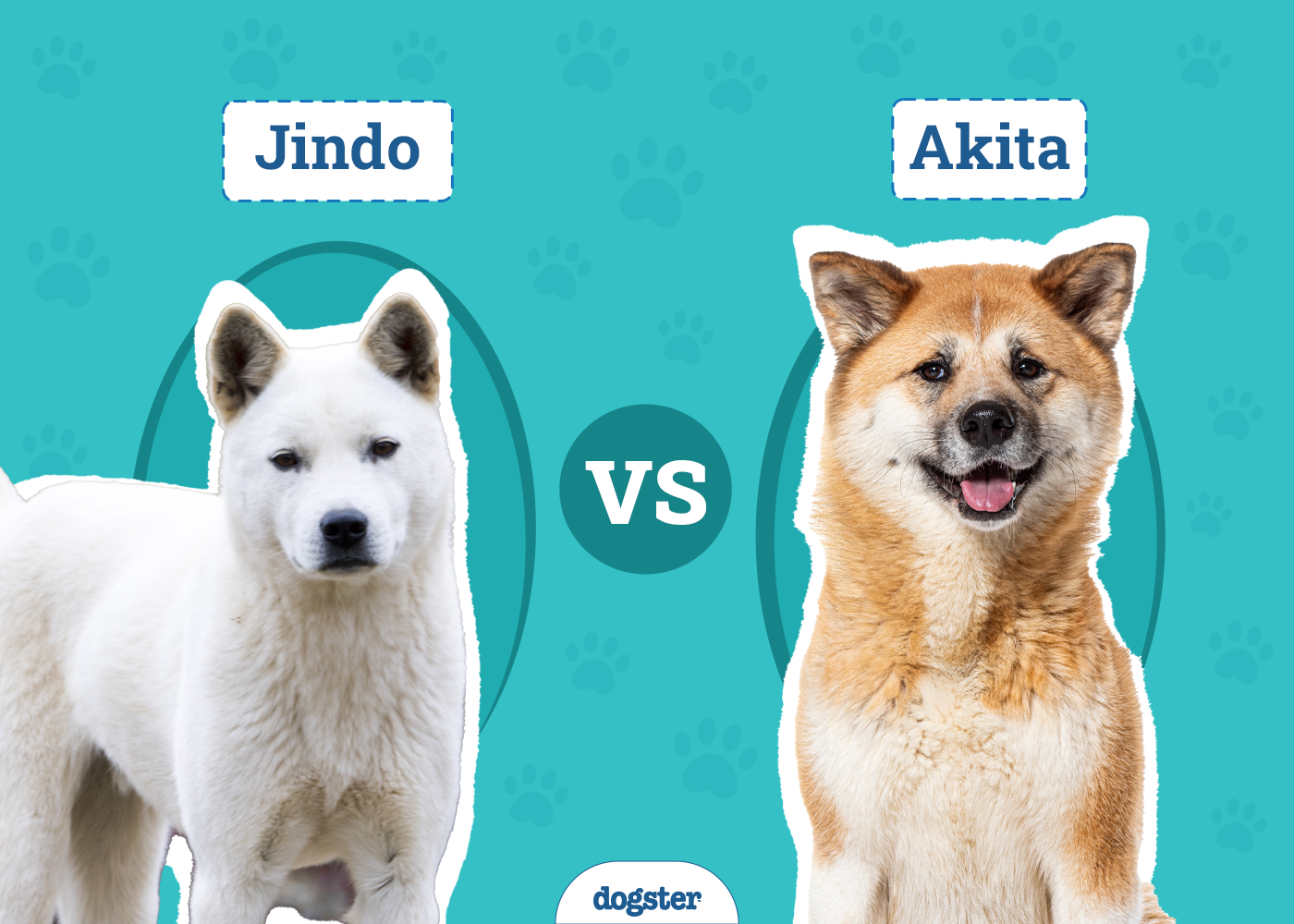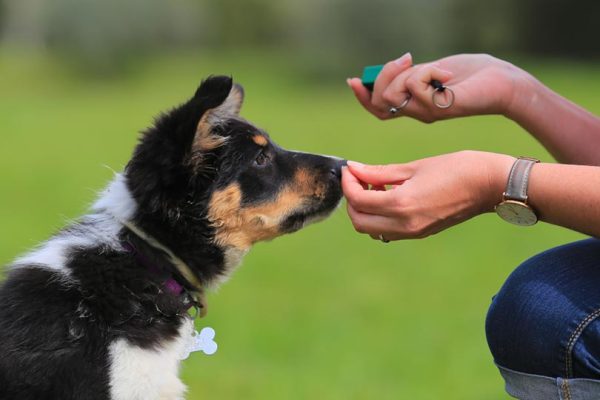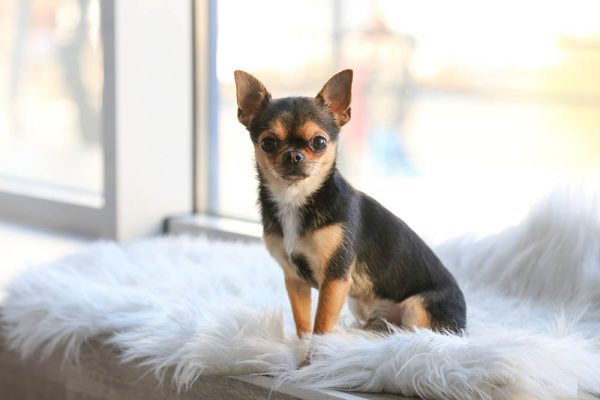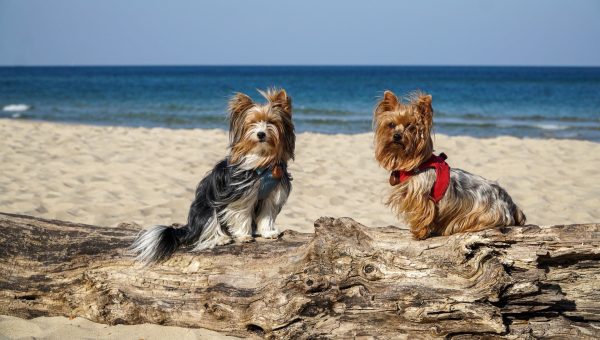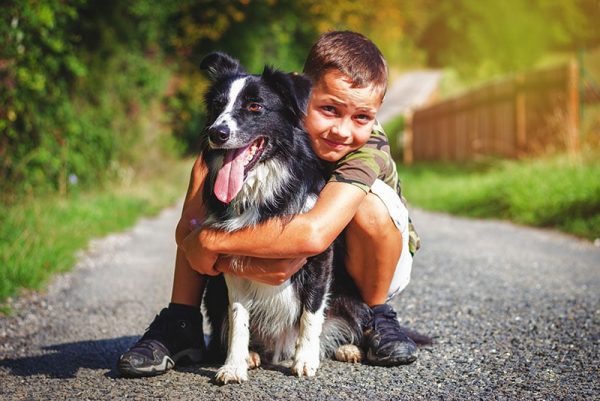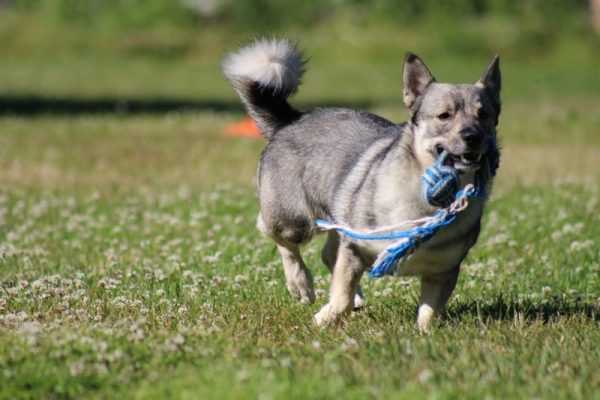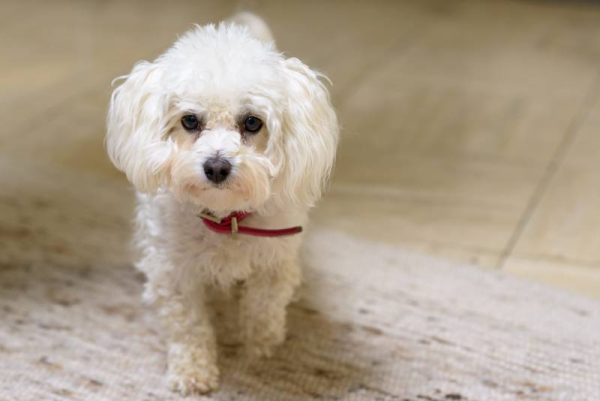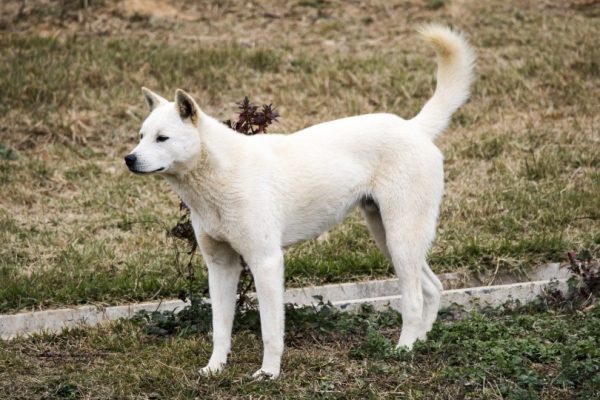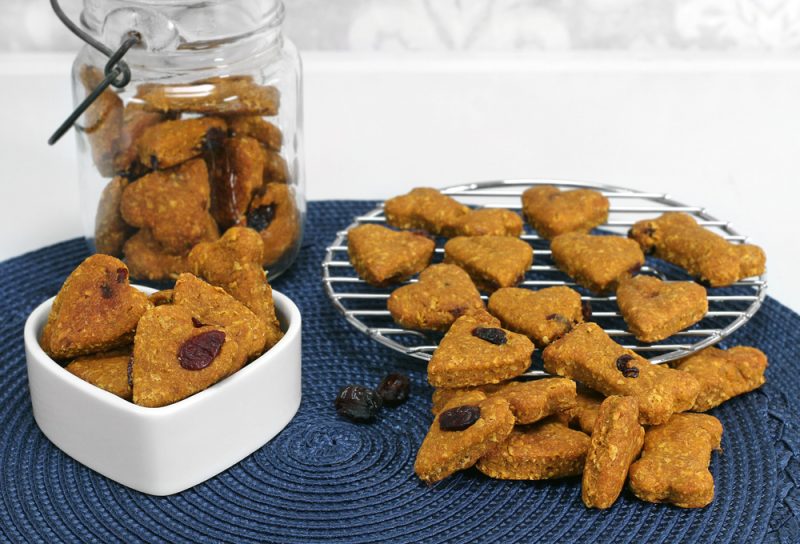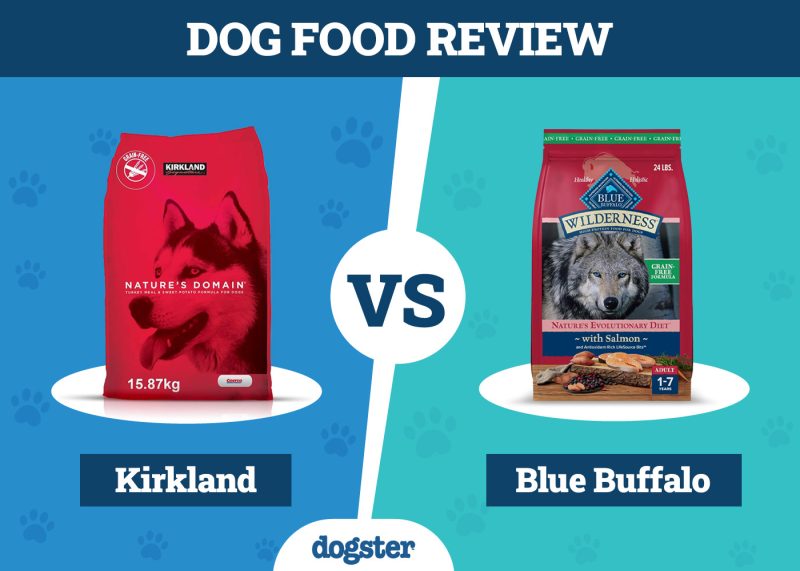In this article
View 3 More +Are you looking for an incredibly intelligent dog that learns quickly, is very clean, and will be an alert guard dog for you and your family? If so, the Akita and Jindo fit that description perfectly. Both breeds are surprisingly smart, enjoy learning new skills, and excel at agility training. They also have an instinctive guarding nature, which is in their genes and doesn’t require much training.
However, these two dogs have several differences, especially in their size and ability to adapt to different situations. If you’re unsure which breed will be a good fit for you and your family, we’ll provide in-depth facts and data about the Akita and Jindo, so you can decide better.

Visual Differences
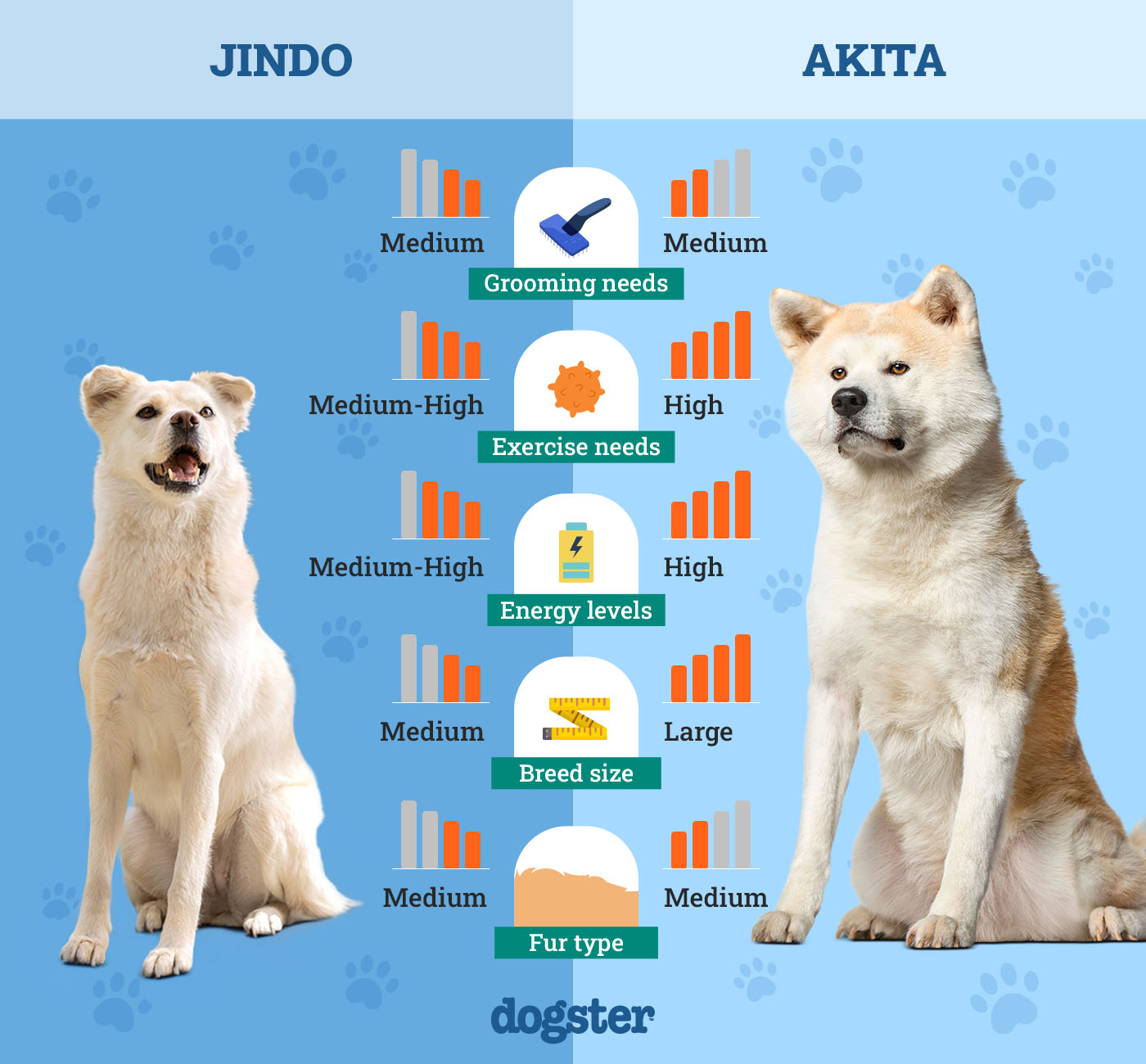
At a Glance
- Average height (adult): 17–22 inches
- Average weight (adult): 30–50 pounds
- Lifespan: 14–15 years
- Exercise: 1+ hours a day
- Grooming needs: Moderate
- Family-friendly: Moderate
- Other pet-friendly: No
- Trainability: Highly intelligent, learns quickly, independent
- Average height (adult): 24–28 inches
- Average weight (adult): 70–130 pounds
- Lifespan: 10–14 years
- Exercise: 2 hours a day
- Grooming needs: Moderate
- Family-friendly: Moderate
- Other pet-friendly: No
- Trainability: Headstrong, intelligent, instinctive guardian

Jindo Overview
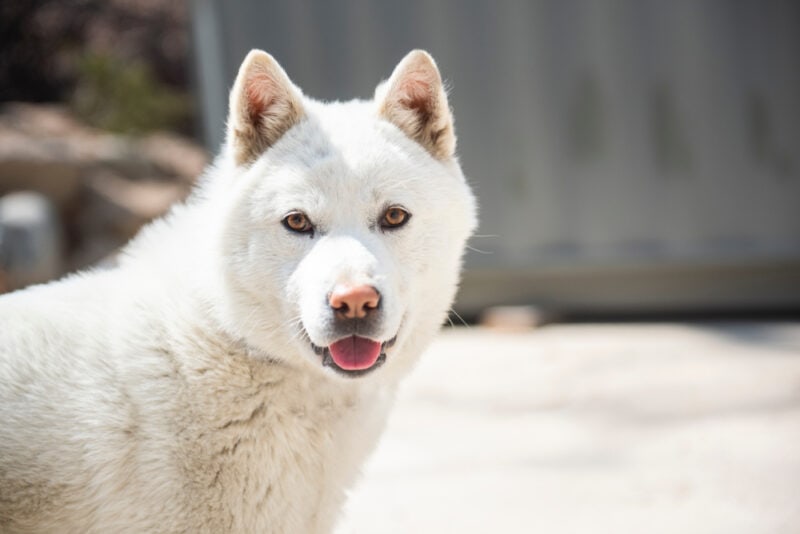
Personality / Character
Although few people in the United States adopt Jindos for hunting, in South Korea, they are well known as one of the best hunting dogs. Jindos are one of the most intelligent canine breeds in the world, with the ability to learn new skills quickly and easily. They’re also highly confident dogs and loyal to a fault, but you should note that they aren’t nearly as social as other breeds.
It’s said that the Jindo is a “one-person dog” that doesn’t tolerate strangers well. They don’t get along with other dogs and pets well but make fantastic guard dogs who remain calm in any situation. They’re not clingy dogs by any means but love following their owners around.
Exercise
Jindos are energetic and have been trained to hunt and guard for many years. However, they require as much mental stimulation as exercise. Between 1 and 2 hours a day of physical activity should suffice, and providing your Jindo a task to perform is a great idea as they love being able to do something productive. Dog puzzle toys are a great way to keep a Jindo happy and occupied.
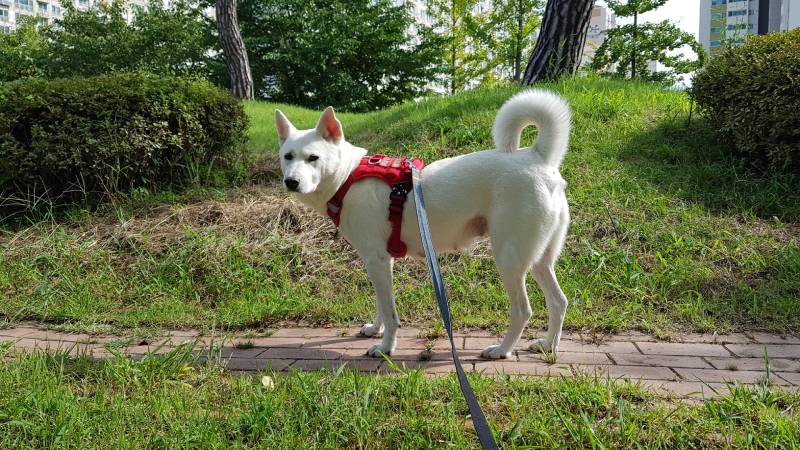
Training
One of the best traits of the Jindo is that they can be potty trained quickly and easily. On the other hand, this breed demands a high level of socialization with people as they can be overly aggressive around strangers without it. Professional trainers recommend starting your Jindo’s training as soon as you bring them home and enrolling your Jindo in a puppy training class to expose them to other people and dogs. It’s important to note that the Jindos’ prey drive is extremely high, which makes training even more critical. If you have other small pets, they should be kept safely away from this canine.
Health & Care
Jindos were only introduced to the United States relatively recently, and for that reason, there’s not a lot of long-term data about their overall health. They are, however, a long-lived breed that regularly lives 14 years or longer. Few health issues have been reported with the Jindo, but they should be checked for hypothyroidism. Also, discoid lupus is a common problem with this breed. Generally speaking, there seem to be few genetic issues with the Jindo.
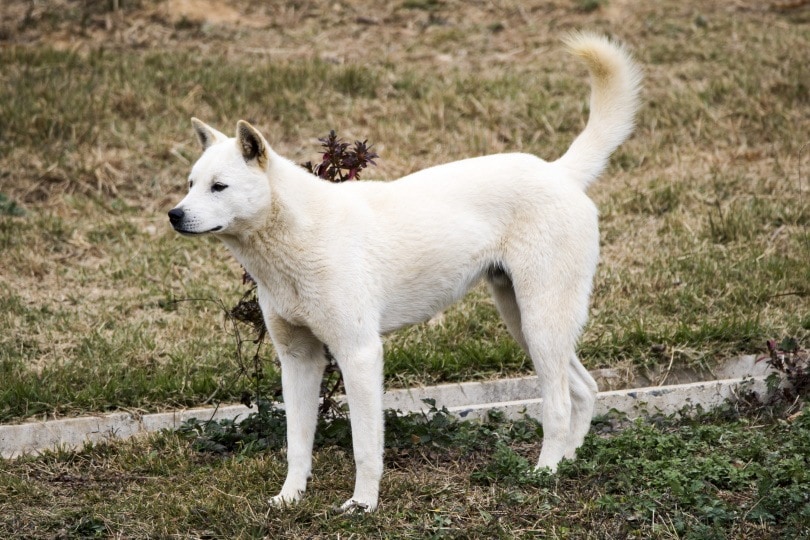
Grooming
Jindos might be one of the cleanest and most fastidious dog breeds, with a double coat that repels water and dirt. It’s unusual for a Jindo to have the typical “dog smell” so many breeds are known for, and while they do shed, it’s not heavy. Once a week will suffice as far as brushing goes, and as far as baths are concerned, once every 6 weeks will likely be more than enough.
As with all dogs, brushing your Jindo’s teeth is essential, as well as trimming their nails. It’s also worth noting that a Jindo blows its coat two times a year, during which they will shed significantly more fur and need much more brushing.
Suitable For:
Socialization is a critical factor when you own a Jindo, especially if you have a large family and other pets. If they’re not socialized well, they can be aggressive and solitary. However, if well-socialized from a very young age, most Jindos get along well with children and other pets and will fit into a large or small family. The best owner for a Jindo, however, is a single person with plenty of time to train their pet and who will spend an inordinate amount of time with them throughout the day.
- Incredibly easy to potty train
- One of the cleanest dog breeds
- Highly intelligent
- Learns incredibly fast
- Very calm, quiet, and respectful
- Amazing hunting and guard dogs
- Aloof with strangers
- Can be bullies if not socialized well
- Must be on a leash at all times when outside
- Very high prey drive
- Sheds heavily twice a year

Akita Overview
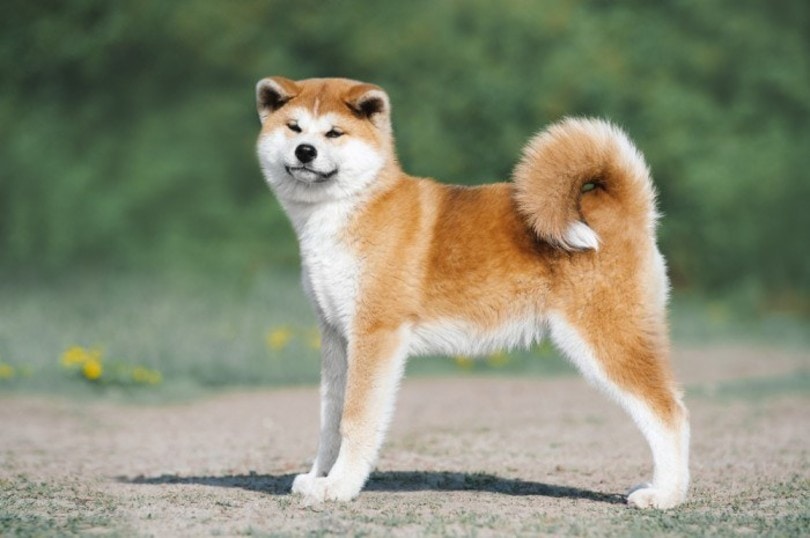
Personality / Character
The Akita is one of the most independent dog breeds you’ll find and are instinctive guardians that need little training to protect their owner and adopted family. Although not overly aggressive towards children, Akitas can be very aggressive with other dogs, especially during male-on-male interactions. You don’t want to take them to the local dog park unless you’ve socialized your Akita very well (and it still might not be possible).
Towards their family, the Akita is typically sweet and, considering their size, rather silly also. Like the Jindo, they learn new skills quickly, are courageous in the face of danger, and are loyal to their core. Akitas are also quiet and only bark if they have a very good reason to do so. They long for companionship and are very devoted dogs with their humans.
Exercise
Akitas are large dogs, but they’re energetic and need around 2 hours of exercise a day. However, they tend to suffer from hip and elbow dysplasia, so over-exercising an Akita is not recommended. Akitas need plenty of mental stimulation since they’re surprisingly intelligent. Teaching new skills and playing games with your Akita is a must to keep their brain engaged and prevent destructive behavior.

Training
“Headstrong” is a polite way to describe the Akita, although some might use “stubborn” instead. Like Jindos, the Akita has an incredibly high prey drive and should always be on a leash when outside in an unfenced area. If not, they will run after something and may get lost for days (this is common for other dog breeds as well). Socialization is also critical for this breed; without it, they can be aggressive toward strangers and unfamiliar dogs. Other than that, though, training these dogs is a joy as they’re eager to please and learn things quickly and easily.
Health & Care
Because of their size, the Akita is vulnerable to hip and elbow dysplasia. They also have a higher rate of bloat, a life-threatening health issue, and a higher rate of eye and thyroid issues. You must find a reputable breeder who breeds strong Akita stock to ensure the lowest risk of all these health issues.
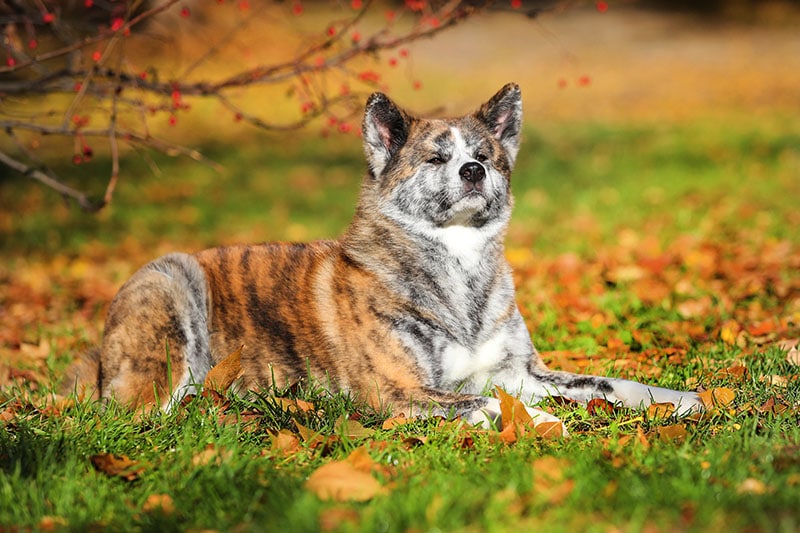
Grooming
Like their Jindo cousin, the Akita doesn’t have the dog smell that many breeds are known for. However, they have a thick plush coat that needs weekly brushing to stay in prime condition. Like the Jindo, the Akita blows out its fur twice a year, during which time they shed heavily. During the rest of the year, shedding is minimal. As with all dogs, regular tooth brushing, eye cleaning, and nail trimming are essential. A well-socialized Akita might allow a groomer to do this, but it may be best to learn how to do it yourself to provide bonding time with your dog.
Suitable For:
If we’re being honest, the Akita won’t make a great family pet due to their high prey drive, especially for families with smaller children. They’re better suited to a single person or couple who can give them a lot of time, attention, and training. However, an Akita might be a good choice for larger families with older kids. They form strong bonds with their people and are excellent guard dogs. If this is your first dog, or you lead a busy lifestyle, another breed might be a better choice.
- Extremely loyal
- Innate guarding abilities
- Exceptionally intelligent
- Clean and fastidious
- Affectionate toward family members
- Can be aggressive
- Intolerant of other animals and strangers
- High prey drive
- Independent and stubborn
- Shed twice a year heavily

Akita vs Jindo: Apartment Living
The average Jindo will do quite well in a small apartment as long as they can go out once or twice a day to explore. The Akita, however, needs a lot more space to move around and would be a better fit for an owner with a large backyard since the breed’s aggressive tendencies make it difficult to take them to the park.
Akita vs Jindo: Size
The Akita is twice the size of the Jindo. That’s a massive difference and something to remember when choosing between these two canines. Living with a dog that can easily reach as high as 120 pounds is not something every dog owner can handle easily. Also, the cost to feed an Akita will be quite a bit higher than the Jindo.

Which Breed Is Right for You?
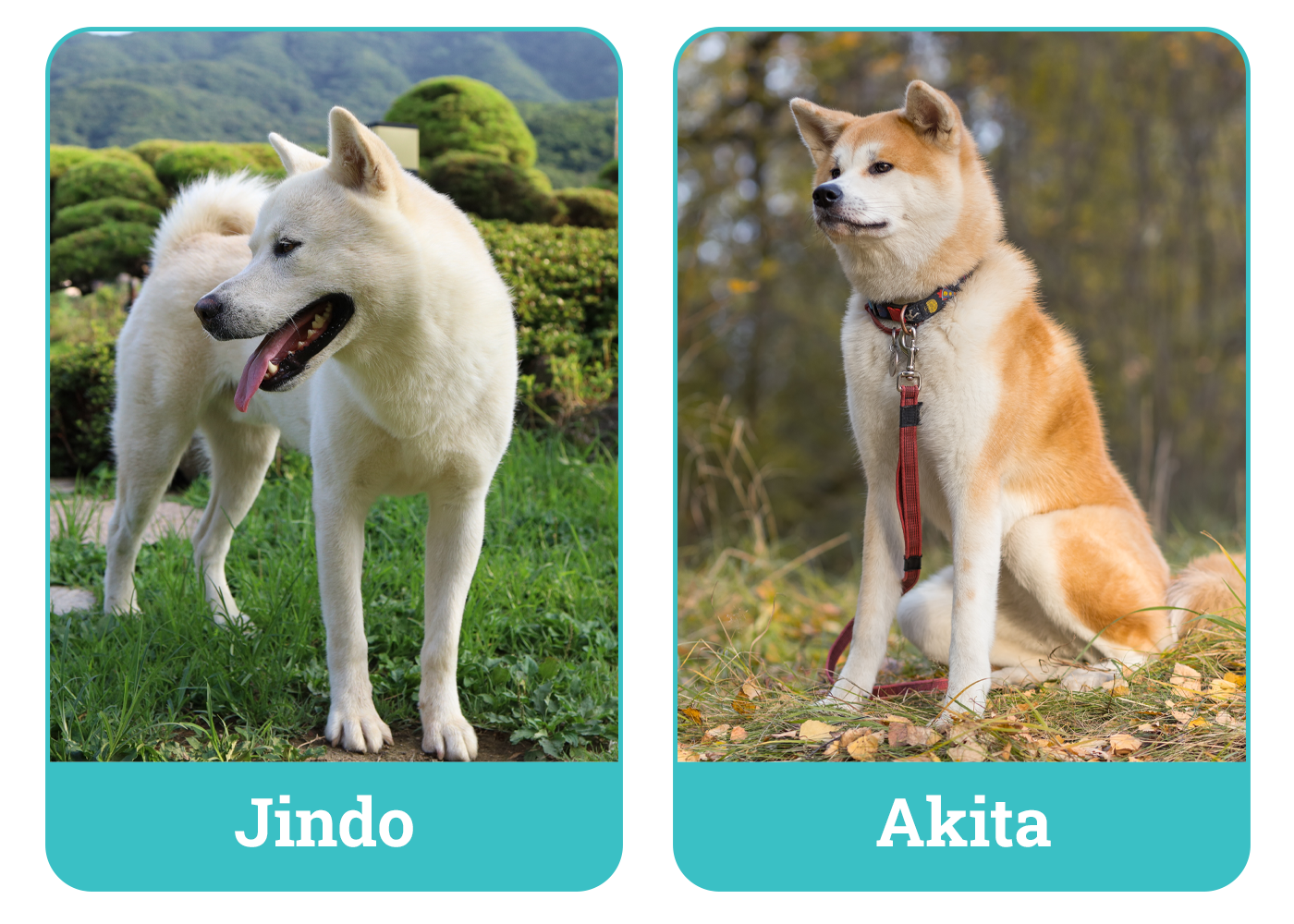
The Jindo and Akita share more than a few traits, including above-average intelligence, very little dog odor, and the ability to learn new skills quickly. They’re both cunning dogs and are loyal to their owners.
Both are incredibly protective of their families and can be potty trained with little effort, and they prefer quieter environments with few visitors. The Akita is a much larger dog that demands more time, space, and energy. Aside from their size and aggression differences, the Akita and Jindo are pretty similar. Whichever breed you choose, if you train and socialize them well, you’ll have a fine canine and a fantastic companion for life.
See Also:
- Shiba Inu vs Korean Jindo: Differences Explained (With Pictures)
- Basenji vs. Shiba Inu: Differences Explained (With Pictures)
Featured Image Credit: (T) designer.oki, Shutterstock | (B) Olga Aniven, Shutterstock
